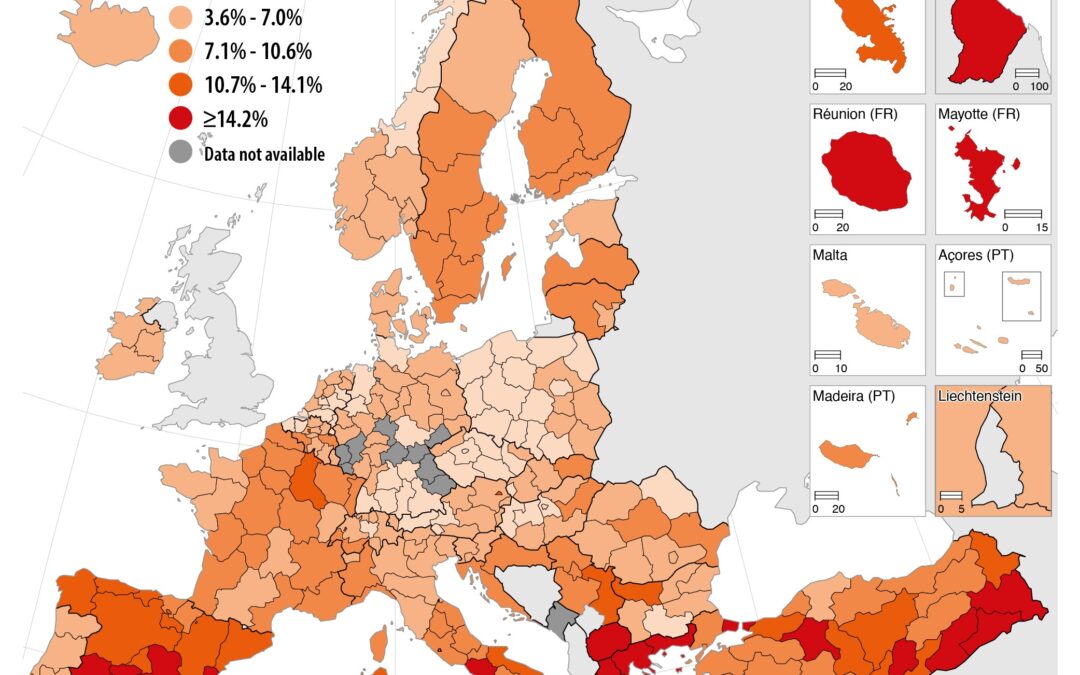The Polish province of Wielkopolska (Greater Poland) recorded the lowest unemployment rate in the EU in 2020, as well as one of the lowest among the world’s rich economies.
The latest data from Eurostat show that in Wielkopolska, which has a population of 3.5 million, the unemployment rate among those aged 15-74 last year was just 1.8%. By contrast, the highest rate, of 24.5%, was found in Spain’s Cueta region.
At the start of April, Eurostat also reported that Poland as a whole also had the lowest unemployment figure among EU member states. However, experts believe the optimistic national figures may be concealing growing “hidden unemployment”.
📰✏️👔 In 2020, the #unemployment rate of people aged 15-74 increased in most of the NUTS 2 regions of the EU.
🟢 Lowest:
🇵🇱 Wielkopolskie, Poland (1.8%)
🇨🇿 Central Bohemia, Czechia (1.9%)
🟠 Highest:
🇪🇸 Ceuta, Spain (24.5%)
🇪🇸 Melilla, Spain (23.7%)
👉🏼 https://t.co/tfRCrzLnMG pic.twitter.com/CKhk48lKqo— EU_Eurostat (@EU_Eurostat) April 28, 2021
Wielkopolska’s unemployment figure in 2020 would also rank as the second lowest in the OECD, a club of mostly rich countries, reports Business Insider.
Across the EU, the unemployment rate in 2019 was at its lowest level in two decades. However, as a result of the coronavirus pandemic, in 2020 it increased by 0.4 percentage points year on year.
Eurostat’s latest EU-wide data, for February 2021, show that Poland’s unemployment rate of 3.1% was the lowest in the bloc. Spain again found itself at the other end of the ranking, with 16.1%.
Poland has the EU's lowest unemployment rate https://t.co/yhBWLSNtmn
— Notes from Poland 🇵🇱 (@notesfrompoland) April 7, 2021
However, experts believe that these optimistic figures may conceal growing “hidden unemployment”, according to additional information in the Labour Force Survey (BAEL) conducted by Poland’s official statistics authority (GUS).
Researchers at Santander Bank Polska believe that near the end of 2020 there was a shift of people moving from employment (90,000 fewer in the fourth quarter) to self-employment (179,000 more in the same period), largely in agriculture.
“In our opinion, a large part of this movement is the return to the countryside of people who have lost their jobs in cities, which we interpret as hidden unemployment,” they said, quoted by Business Insider. They also noted that many people, mainly women, may have become “professionally inactive”.
Eurostat’s comparative figures for 2020 should also be treated with caution, since during lockdown various countries encouraged workers’ absenteeism rather than dismissal, meaning that they did not count as unemployed. Data were also not available for most regions in Germany due to changes in the survey methodology.
Another measure for youth unemployment (people aged 15-24) also shows some of the bloc’s lowest unemployment figures for several regions in Poland and the Czech Republic.
🟡 #Youth #unemployment rates varied from 5% in 🇨🇿 Prague, Czechia to 71% in 🇪🇸 Melilla, Spain in 2020.
ℹ️📊 Discover more #regional #data on the labour market in our #StatisticsExplained article and learn more about the EU Labour Force Survey (LFS) 🔍
👉🏻 https://t.co/moXC1DOEsu pic.twitter.com/qR5qEKkFNk— EU_Eurostat (@EU_Eurostat) April 28, 2021
Main image credit: Eurostat

Maria Wilczek is deputy editor of Notes from Poland. She is a regular writer for The Times, The Economist and Al Jazeera English, and has also featured in Foreign Policy, Politico Europe, The Spectator and Gazeta Wyborcza.



















